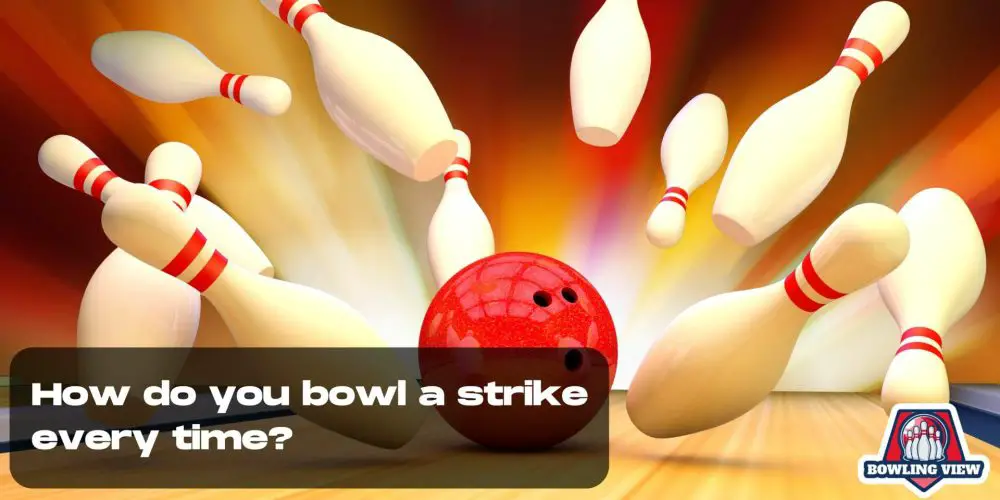Bowling a strike every time might seem like an impossible feat for many, but with the right technique, tips, and practice, it can become achievable. Becoming proficient at consistently knocking down all ten pins can make the difference between being an amateur and a skilled bowler. This article covers the essentials to get one closer to that perfect game.
The key to success in bowling lies in understanding the basics of the game, such as the correct grip, stance, and approach. Developing a consistent bowling routine and honing one’s aiming strategy greatly affect the outcome. These are the foundations upon which one can build a strong bowling performance.
After mastering the fundamentals, the focus shifts to more advanced techniques, including analyzing oil patterns, choosing the appropriate bowling ball, and fine-tuning one’s release. With dedication and perseverance, it is possible for any aspiring bowler to greatly increase their chances of throwing a strike each time they step onto the lanes.
Fundamentals of Bowling a Strike
Understanding the Pocket
To bowl a strike consistently, it is crucial to understand the concept of the pocket. The pocket is the space between the 1 and 3 pins for right-handed bowlers and the 1 and 2 pins for left-handed bowlers. Aiming for the pocket increases the chances of knocking down all the pins, resulting in a strike. Identifying the target arrow that aligns with the pocket is also essential, as it helps in controlling the ball’s trajectory.
Four-Step Approach
The four-step approach is widely used in bowling, regardless of the bowler’s skill level. It starts with the positioning of the feet and ends with the proper release technique.
- Step 1: Hold the ball with your dominant hand, and let the other hand support it. Stand on the approach, with your feet shoulder-width apart, and place the dominant foot slightly behind the other. For example, if you’re a right-handed bowler, your left foot will be in front.
- Step 2: Move the ball forward with the first step of your non-dominant foot.
- Step 3: Swing the ball back as you take the second step, while keeping the arm slightly bent.
- Step 4: Release the ball with a smooth motion while sliding the non-dominant foot forward during the final step.
Starting Position
The starting position is determined by two factors: the bowler’s stance and the equipment worn. In terms of stance, keep your knees slightly bent, and maintain a comfortable posture with your spine upright.
When positioning the ball, house balls should be aligned with the shoulder, while customized bowling balls should be held closer, around the chest area.
Bowling shoes are essential in the starting position, as well. They enhance the approach by providing proper footing, stability, and support, thus preventing any injuries or slips on the alley. Proper positioning and using quality equipment contribute to a successful approach and, ultimately, help in achieving a strike consistently.
Bowling Ball and Equipment
Material and Weight
When it comes to bowling a strike every time, it’s essential to consider the material and weight of the bowling ball. Bowling balls are typically made from three primary materials: plastic, urethane, and reactive resin.
- Plastic: These balls are the least expensive option and are ideal for beginners. They provide minimal hook potential and help with controlling speed.
- Urethane: Offering a little more grip on the lane, urethane balls give a moderate amount of hook and are suitable for those looking to improve their game.
- Reactive Resin: The most advanced material, reactive resin balls provide the most hook potential and are favored by professional bowlers for their increased power and control.
The weight of the ball plays a significant role in determining how much control a bowler has when attempting a strike. Generally, heavier balls (up to 16 pounds) afford better control, while lighter balls (below 12 pounds) allow for faster speeds but less precision.
| Weight Range | Typical Usage |
|---|---|
| 6-10 lbs | Kids and beginners |
| 10-12 lbs | Lighter balls for better speed |
| 12-14 lbs | Average weights for adults |
| 14-16 lbs | Advanced bowlers and professionals |
Grip and Finger Holes
Proper grip and finger hole placement contribute significantly to a bowler’s ability to achieve consistent strikes. There are two primary types of grips in bowling:
- Conventional Grip: This grip features finger holes that reach the second knuckle, offering a comfortable and secure feel for beginners.
- Fingertip Grip: With holes extending only to the first knuckle, the fingertip grip provides more leverage for controlled hooks and is ideal for experienced bowlers.
Regular maintenance of finger hole sizing is essential for a consistent grip. Bowlers should ensure their holes are neither too tight nor too loose, as this can impact control and lead to poor results.
In addition to the right bowling ball, bowlers should also pay attention to their shoes. Professional-grade bowling shoes provide greater slide control, improving balance and delivery – both of which are vital factors in achieving a successful strike.
Improving Your Technique
Swing and Release
To improve the accuracy of your bowling strike, focus on the swing and release. Ensure that your bowling arm stays relaxed during the swing, while maintaining the proper form. Grip the ball firmly, but not too tight, and insert your fingers correctly into the finger holes. During the backswing, keep a smooth and fluid motion, allowing the ball’s weight to generate momentum.
Upon reaching the peak of the backswing, start your downswing with a controlled motion, releasing the ball as your arm approaches the foul line. Skillful release imparts the right amount of spin, aiding in striking the pins consistently. Practicing the steps of an effective swing and release will lead to a refined form, ultimately enhancing your performance in the sport.
Footwork and Timing
Footwork and timing are critical aspects of bowling that play a significant role in consistently achieving strikes. To perfect your footwork, begin by assuming the correct stance with your feet positioned shoulder-width apart—right foot slightly ahead for right-handed bowlers and left foot ahead for left-handers.
As you approach the foul line, ensure that your steps are in sync with your bowling arm’s motion. Proper timing contributes to increased accuracy and power in your delivery. Maintain a steady gait, while keeping balance and controlled movement, as you execute the final slide towards the foul line. Practice different styles of footwork and find one that suits your personal comfort and form.
Follow-Through and Adjustments
Once you have mastered your swing, release, and footwork, it is essential to concentrate on your follow-through. A proper follow-through is characterized by a continuous, smooth motion, maintaining the direction of the desired strike with the bowling arm fully extended towards the pins.
Adjustments are key to ensuring consistent strikes, as not every frame will yield the same results. Paying close attention to the pins’ reaction and your ball’s movement can help you make alterations in your positioning, spin, and release as needed. Learning to adapt your technique based on the specific situation will undoubtedly contribute to your overall success in bowling a strike every time.
Strategies for Consistent Strikes
Control and Targeting
One of the critical factors to consistently scoring strikes is having good control of the ball. Control comes from a combination of factors like the right posture and grip, the way you swing your arm back, and how you release a bowling ball. Practice keeping your approach and delivery consistent to improve your success rate.
The targeting aspect is also essential in achieving consistent strikes. A common tactic is to aim for the target arrow located about 15 feet down the lane. Align your body with the middle dot on the approach, and then focus on hitting the target arrow. By repeatedly practicing your control and targeting, you can improve your ability to repeatedly knock down all the pins.
Hook Shot and Straight Ball
There are two primary ways to throw the ball when aiming for consistent strikes: the hook shot and the straight ball. Each has its advantages and tactics.
Hook shot involves curving the ball as it moves down the lane. To hook the ball, use your wrist to apply a slight twist around the side of the ball during the release, while maintaining a consistent release point. This motion increases the ball’s rotation, causing it to curve and hit the pin pocket with increased power. Mastering the hook shot can increase your chances of getting a strike, as it can help the ball to hit the pins at an optimal angle.
The straight ball, as the name implies, is a straightforward throw with minimal or no curve. To throw a straight ball, simply focus on releasing the ball with your hand behind it and your thumb pointing up, ensuring there’s little to no rotation applied. Although it may seem simpler, a well-straight ball can be just as effective as a hook shot when targeting the correct pin pocket.
Adapting to Different Lane Conditions
Adapting to different lane conditions is crucial for successful bowling. Various factors, such as the lane’s oil pattern and surface, can affect the way your ball reacts. You should be able to switch between the hook shot and straight ball approaches depending on the lane conditions.
Pay attention to the oil pattern on the lane – if it is heavier in the middle and lighter on the sides, a hook shot may be more effective. On the other hand, if the oil pattern is uniform or tighter, a straight ball could have better results. By observing and adapting to these differences, you can improve your consistency in scoring strikes.



